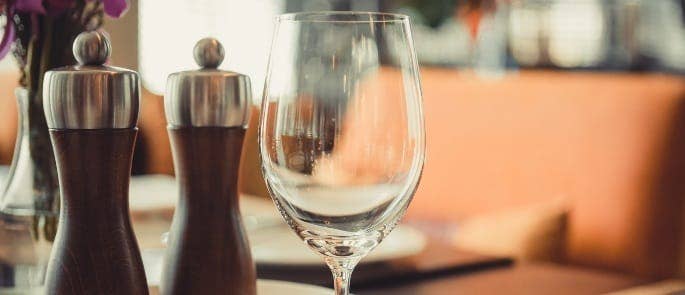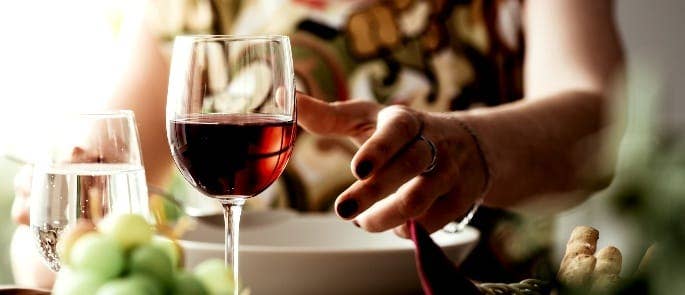Upselling Techniques in Restaurants
Upselling in restaurants is a strategy you should embrace and not avoid out of fear of sounding badgering or ‘salesy’. If done smartly and professionally, upselling boosts your restaurant’s profits, impresses your customers, and enhances their dining experience.
Why is Upselling in Restaurants Important?
Subtle, appropriate upselling at an opportune moment comes across as genuine attentiveness to a guest’s needs. It demonstrates that your front-of-house staff are knowledgeable and enthusiastic about the menu and want every diner to feel indulged. As a result, guests will respond positively to your recommendations and feel keen to enhance their meal. This means a nice profit boost for you!

You might start seeing regular customers spread word of your restaurant’s courteous service. They may even return with a new party of people they’re eager to share it with.
After all, being catered for is why guests like to dine out, so their favourite pick will be whichever restaurant best satisfies their every need. With the right upselling techniques, it’ll easily be yours.
Need a Course?
Our range of Food Hygiene Courses are designed to train you and your staff in food handling while our Level 3 Food Hygiene Course shows senior staff how to manage food safety systems and ensure your restaurant is running safely.
Upselling Techniques in Restaurants
The 5 techniques listed below help you upsell with a strategic approach. Instead of constantly pushing dishes and drinks that have the higher profit margin, you’ll promote a healthy range of items that invite diners to say: “Oh, go on then!”
Good perception
Upselling is an art. To master it, staff need good timing and an ability to read customers. They should know how to sense the vibe at a table and what cues to look for in guests. These help them determine what and how to upsell to them. Experienced front-of-house employees might be able to pass on their knowledge to newcomers, as they’ll have extensive experience reading diners.

It’s crucial that staff know the audience they’re catering for. They’ll inevitably need to change their approach depending on who they serve.
For example, a group of friends who take their time to eat and chat usually like the idea of a cheeky slice of cake. On the other hand, a group of colleagues out for lunch probably don’t have enough time for tons of add-ons. Your best bet in that situation is to upsell quality dishes because, hey, it’s a work lunch out – they’re willing to spend a bit more than usual.
Furthermore, the way your staff speak to these different groups needs to vary. Staff can act more lively and outgoing with a younger group, whereas an elderly couple may prefer to receive a reserved warmth from your waiters.

You also need to train staff to approach guests at suitable intervals. If they incessantly ask customers whether they want more drinks, they may annoy and ironically put them off.
Once staff become attuned to individual diners’ needs, they’ll know what item and what time is right to upsell.
Upselling extras
To encourage diners to order sides, often all you need to do is simply ask. Other times, you need to offer specific recommendations that pair with a diner’s order, and give it a solid pitch.
However, the pitch is only effective if it sounds genuine, so make sure that you encourage staff to upsell everything with real enthusiasm. You should also ensure that you recruit people with the right personality to do so. Even if it’s a dish they don’t eat, for example a vegetarian upselling a burger, they can describe what ingredients make it unique, which emphasises their knowledgeability. They can also say how popular it is, which usually captures diners’ interest.

People respond well to sincerity, as it makes them listen to their own emotions and, more often than not, decide to treat themselves. They also like to follow what’s popular. Popularity is a sign of quality and makes the person feel included in a wider sense of enjoyment.
Great extras to upsell include chips, garlic bread, salads, extra sauces, and toppings. Teach staff about what goes well with what type of meal, and ensure they tell guests this. For example, “The pizza goes great with a side of dipping sauce or extra mozzarella!”
Upselling Drinks
Your front-of-house staff should know the drinks menu back to front, including your selection of wines, and offer specific recommendations to guests when asked. Diners are more likely to go with a confident suggestion from their waiter than scour the menu for something else.
Keep in mind that many guests pick the second least expensive wine to avoid appearing cheap. Therefore, you should price your wines accordingly to ensure that these receive the best profit margin.

Also remember that tap water is free: you can’t argue with that. But you can charge for branded mineral water, which many people prefer over tap water, particularly if they’re consuming it together with an expensive red wine. So if people order red, staff should recommend mineral water to go with it.
When offering refills, staff have an opportunity to add a personalised touch to improve the effectiveness of upselling. They should ask guests if they’d like a refill of their specific drink. For example, “Would you like another Diet Coke, Miss?” It’s small but significant, as it shows you care enough to track their orders.
Timing is also important. Waiters should offer top ups when drinks are nearly empty and when diners are well into their meal, as they’ll likely want another to wash it down.
Menu positioning
Your menu design makes a tremendous difference to how items sell. Place complementary items near each other or include a line underneath that suggests which drinks pair well, such as specific whites with fish or reds with certain steaks.

Also consider using images on your menu. Place them next to extras and dishes with high profit margins to draw people’s attention and encourage them to order. Use photos of your actual dishes, but also consider using illustrations if you’d like to keep it simple – they’ll draw attention all the same.
You might worry that images cheapen the menu. However, if done professionally they can actually add a real flair that many menus lack.
For more information on how to use your menu to increase profitability, check out our article, here.
Know your menu
Staff need to know the menu inside and out: what dishes complement each other, which ones guests like at certain times of day, and which make a higher gross profit. To truly win over diners, staff can’t simply mull over a few options and eventually land on an unconvincing answer. They need to give confident recommendations that show they know what they’re talking about.
As well as teaching staff what dishes and drinks pair well, you should get them to try as much of the menu as you can. With first-hand experience of the dish, they can give a genuine review of its taste, texture, portion size, and everything else a diner wants to know about their order.

When recommendations come from a place of honesty, guests feel excited to place their order and feel more responsive to upselling. They’ll trust the waiter’s judgement and sense that they genuinely know what they’ll enjoy.
What to Read Next:
- How to Improve Restaurant Efficiency
- How to Foster Motivation in Your Restaurant Employees
- 17 Ways to Reduce Food Waste in Your Restaurant
- Restaurant Hospitality Quiz







